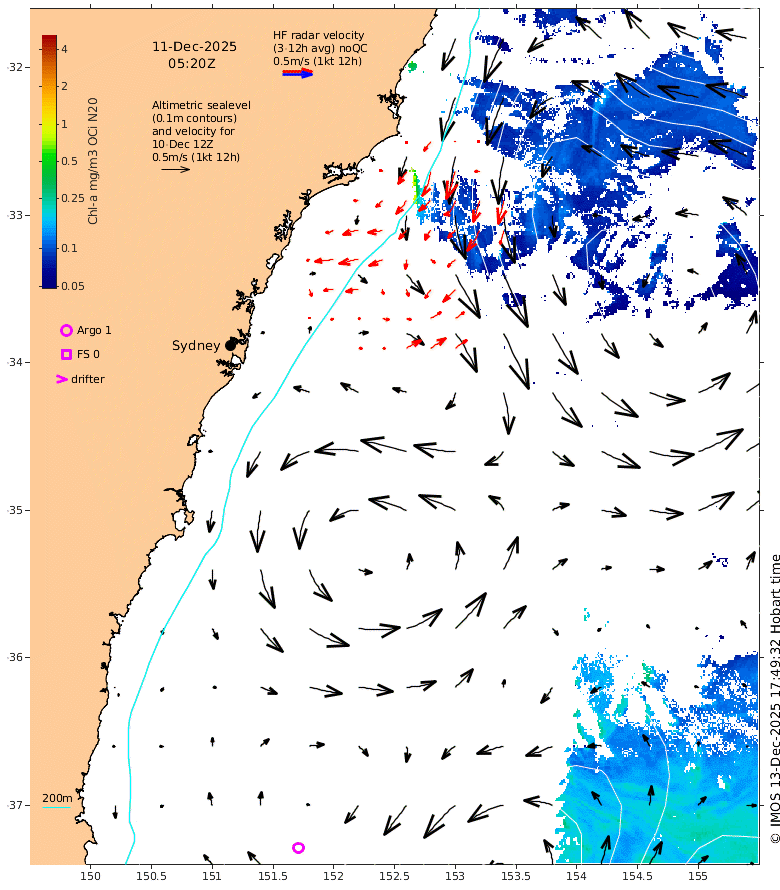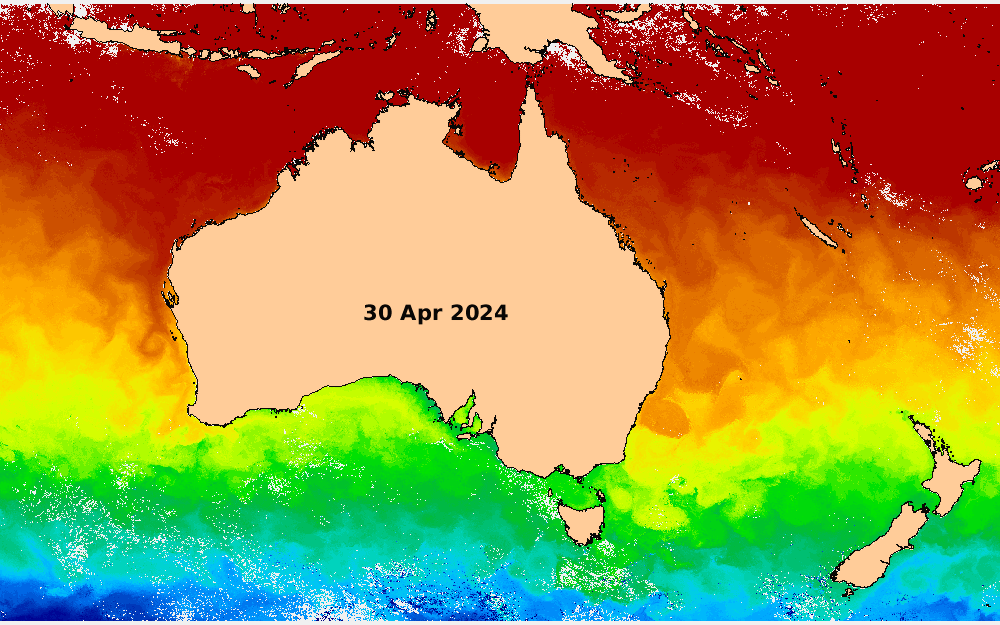
Legend
- ○
- Argo
- →
- Glider
- ⇉
- Radar
- >
- Drifter
- ○
- Ship
Click for more
information

Select region


* Regions available for the chosen product are bounded by full lines
Snapshot Chlorophyll-a
Daily images of chlorophyll-a estimates from the MODIS sensor on NASA’s Aqua satellite indicating the amount of phytoplankton in the water. Chlorophyll-a can be detected by satellite by measuring the relative amounts of light coming from the ocean at different wavelengths. The Ocean Colour model (OC3) that converts the satellite observations to chlorophyll-a concentration assumes that chlorophyll-a is the only thing in the water affecting the measurements. This is largely true in the open ocean but in coastal waters tannin from rivers and suspended sediments can be present and cannot be differentiated from chlorophyll-a.
In the open ocean we can be confident the satellite images represent productivity, but in very shallow coastal waters or over reefs, bottom reflectance and bottom vegetation can also contribute to the estimate. There are times when a large chlorophyll-a signal in coastal waters can be relied on to infer productivity. For example, any summertime upwelling event off the Bonney Coast, where the shelf is deep and there is little river runoff. Conversely, there are times when we can be confident the satellite images are representing something else, such as the beautiful outline of the reefs on the central Great Barrier Reef or suspended sediment and dissolved organic matter in the aftermath of Cyclone Debbie.
Snapshot Chlorophyll-a
The 200m and 2000m isobaths (or see key) are indicated in cyan.